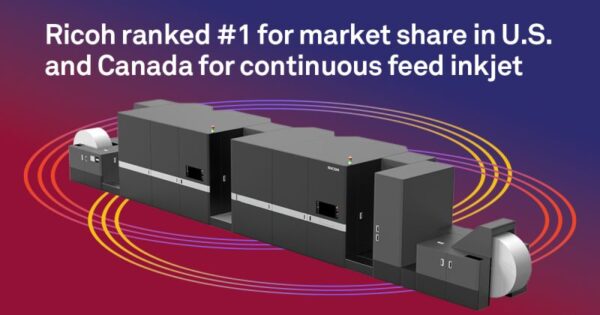If you want to get the pulse of what’s taking place at Ricoh USA and inside the Ricoh dealer community, the best person to speak with is Jim Coriddi, senior vice president of Ricoh USA’s dealer division. The Cannata Report interviewed Coriddi on January 30. In part one we discuss Ricoh’s 2024 initiatives, which segments of the business are poised for growth, production print, and the decline of print. In part two, Coriddi offers his thoughts on the Ricoh-Toshiba partnership, a big rumor associated with that partnership, A4, acquisitions, artificial intelligence, and more. The interview has been edited for clarity and brevity.
What’s Ricoh doing that has you excited for 2024?
Jim Coriddi: What has me most excited is the focus on growth again. Like everyone, as we were working our way through the pandemic, we were all spending a lot of time on things that were not driving growth. It was more about dealing with backorders and having different types of conversations with customers. Now I feel like we’re able to focus on growing again. As you probably know, our fiscal year starts in April, so we’re in the midst of finalizing our plan. It’s all about a lot of very aggressive initiatives and programs designed for specific dealer markets and needs. So that’s what invigorates me. We’re back in growth mode.
What segments of the business are you looking at growing?
Jim Coriddi: One is production, expanding the breadth of what we’re providing. You saw the Z75 at the very, very high end, but even beyond that. Those are going to be a little fewer and far between, but [you’ll see] more from the entry-level that makes up 70 to 75% of the production placements through the mid-range, and the creative and then to the higher levels we have a very specific focus on growing each of those segments.
The other is business color. Then, it’s continuing to grow the adjacencies—content management and workflow. A lot of these adjacencies not only open up business opportunities at a deeper level for the dealers as an add-on but secure their position in the core. And the better provider will be in a better position to add to the print and the core. Many of these workflow solutions allow you to do that, but with it comes challenges. You have to put the resources in play and change that conversation with your customers.
Are there still opportunities for Ricoh dealers that aren’t selling production print today?
Jim Coriddi: Absolutely. A lot of the reasons why we were in Denver [for our dealer meeting] was because of our Boulder [production print] facility. We wanted to give all of our dealers a feel for the level of commitment Ricoh has going forward so they feel secure. There are a number of dealers that have done a tremendous job and have solid customer bases, but from the standpoint of making that commitment to truly drive production the right way, we still have a number of dealers that have not made the commitment it’s going to require, and we’re urging them to do it because we see a lot of opportunity right now.
What does that commitment entail?
Jim Coriddi: It entails having production specialists and, with that, analysts who are able to provide and design the right SOW (Statement of Work) and put together the right overall solution. Selling production is not just about a print device. There are a lot of elements that go into it and add to it. Similar to the MFP, but it does require expertise.
Ricoh has many resources that can help dealers go beyond getting their feet wet, right?
Jim Coriddi: We’ve had a good amount of success with what I would call smaller dealers that might not have the wherewithal to hire specialists and to support [production]. When you do even the simplest break-fix service, this is a clientele that is not as patient when something’s down that’s costing them money. There needs to be a real commitment on the service and support side. Ricoh has been providing that service and solution support for some of our dealers just getting into production. And there have been a few, too, even relatively substantial-sized dealers that were just not ready to make the full commitment. It allows them to build a little muscle before making the hire themselves.
What’s your take on the conversation around the decline of print, especially with Ricoh being such a print-centric company?
Coriddi: I believe the numbers, particularly in certain segments and certain businesses. We all live on the print. Everybody’s got to sell a bottle of toner to make a good margin. However, we also believe that where we are, where our dealers are, and where our direct entities are, we’re in a solid position with our customer base. We need to continue to grow share. Our dealers must continue to grow their share.
We are still in an extremely large industry, and this is where the strong have to make their move. This is the time to be bold. This is not a time to look at certain declines and pull back and retract. Just the opposite. This is the time to move forward and get aggressive. Doing that to take share and continue to build out your presence and what you mean to your customers at the same time.
We’re still very bullish on what’s going on in our industry. When you look at the overall numbers about print decline, certain segments and customer types have declined by a greater amount, while in a lot of the areas where our dealers play in SMB and the mid-market, print is a little stronger. That still does secure a position for the stronger players. When you ask about Ricoh’s opinion, you see what we did from a manufacturing standpoint for MFPs—the joint venture [with Toshiba]. That’s just for MFP engines. That’s it. And nothing’s going to happen for two, three, probably four years. So that’s where our mindset is.




